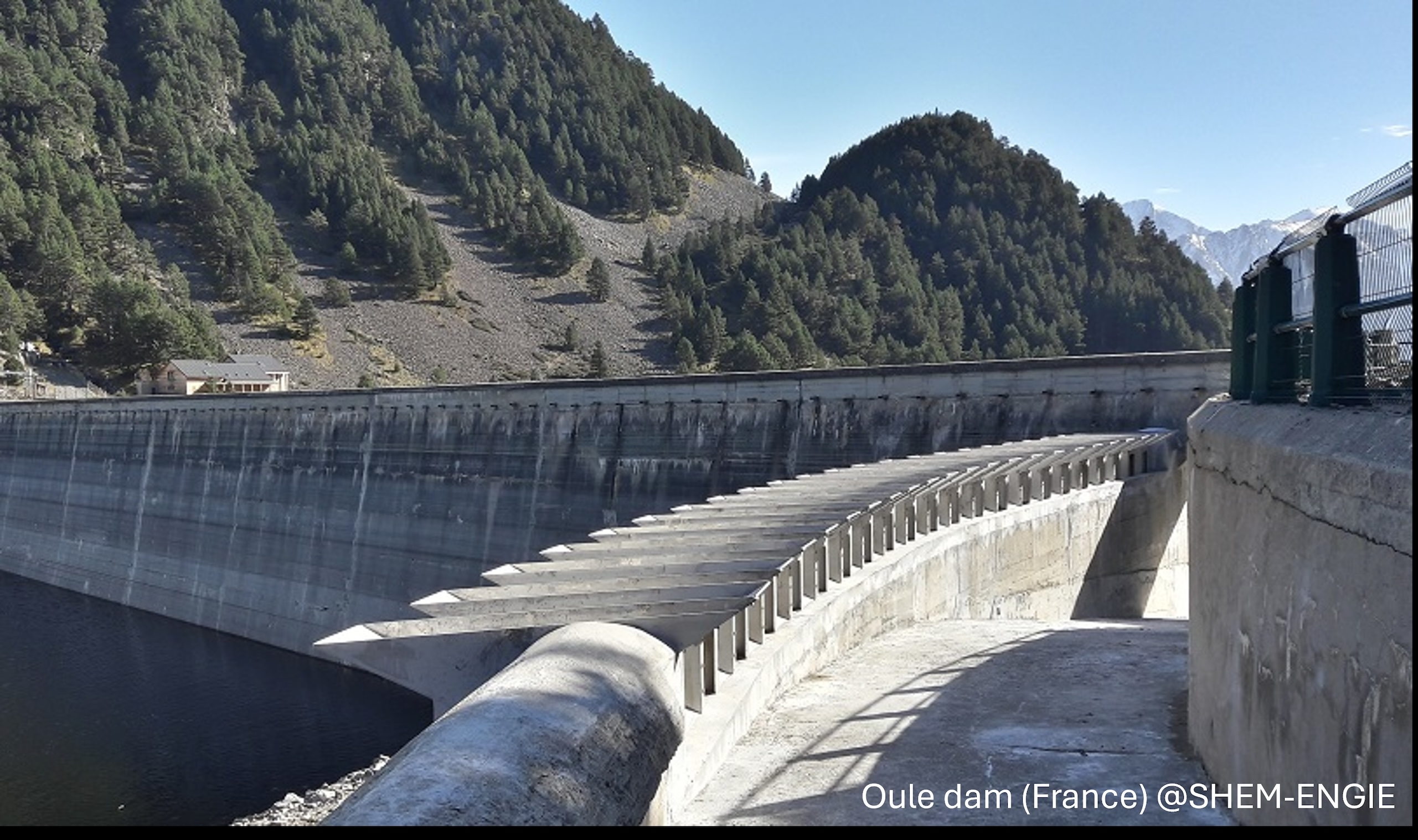Location
Atlanta, GA
Presentation Type
Presentation
Start Date
10-7-2025 9:45 AM
Description
Driftwood is a natural part of most river ecosystems. The knowledge of its interaction with hydraulic structures, such as PKWs, is essential for two reasons: To (1) avoid uncontrolled inundations because of the level rise initiated by trapped driftwood (reducing the weir discharge coefficient), and (2) initiate the passage of the wood over the PKW, so that it remains in the river to further fulfill its environmental services. Knowledge of the conditions motivating driftwood to block at a PKW is essential. The present study accordingly focuses on the blocking probability of driftwood at PKWs and the resulting head increase – providing a basis to limit both. Extensive physical model tests were conducted with broad boundary conditions to achieve a certain significance of results. This is a challenging goal, since driftwood-related phenomena are known to show a partially random behavior. The observations suggest that driftwood typically blocks up to “mid-level” heads, and that a jam is likely removed during floods (large heads). An acceleration of the flow upstream of the PKWs and wide inlet keys showed less blockage and a reduced level increase. These findings are partially in conflict with the maximum hydraulic PKW efficiency: The reduction of the flow head to an absolute minimum by optimizing the PKW geometry might support blockage of driftwood.
Included in
Effect of Driftwood on the Hydraulic Performance of A-Type Piano Key Weirs Situated In-Stream or at Reservoirs
Atlanta, GA
Driftwood is a natural part of most river ecosystems. The knowledge of its interaction with hydraulic structures, such as PKWs, is essential for two reasons: To (1) avoid uncontrolled inundations because of the level rise initiated by trapped driftwood (reducing the weir discharge coefficient), and (2) initiate the passage of the wood over the PKW, so that it remains in the river to further fulfill its environmental services. Knowledge of the conditions motivating driftwood to block at a PKW is essential. The present study accordingly focuses on the blocking probability of driftwood at PKWs and the resulting head increase – providing a basis to limit both. Extensive physical model tests were conducted with broad boundary conditions to achieve a certain significance of results. This is a challenging goal, since driftwood-related phenomena are known to show a partially random behavior. The observations suggest that driftwood typically blocks up to “mid-level” heads, and that a jam is likely removed during floods (large heads). An acceleration of the flow upstream of the PKWs and wide inlet keys showed less blockage and a reduced level increase. These findings are partially in conflict with the maximum hydraulic PKW efficiency: The reduction of the flow head to an absolute minimum by optimizing the PKW geometry might support blockage of driftwood.


